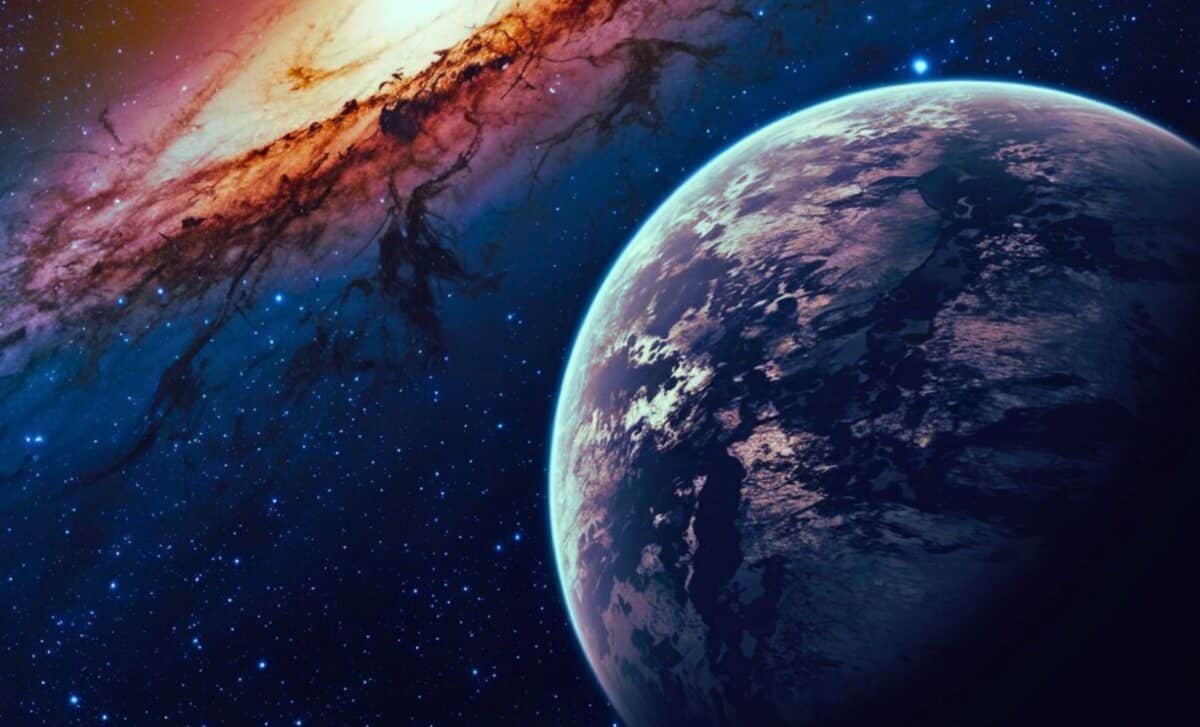
Arezki Amiri Published on December 11, 2024
Collected at: https://dailygalaxy.com/2024/12/a-super-earth-between-mars-and-jupiter-a-hidden-danger-for-earths-survival/
Imagine a massive planet, barely larger than Earth, lurking between Mars and Jupiter, creating chaos in our Solar System. What if such a super-Earth had existed? Could it have made Earth inhospitable? Recent research unveils a disturbing possibility that would have drastically changed the course of our planet’s history.
A Super-Earth Named ‘Phaedra’ – A Planet That Could Have Ruined Earth
Researchers Emily Simpson and Howard Chen from the Florida Institute of Technology have proposed a shocking theory: a super-Earth forming between Mars and Jupiter could have destroyed life on Earth. Their models show how this hypothetical planet, named Phaedra, would have sent Earth’s climate into a frenzy. With extreme winter freezes and blistering summer heat, the once-hospitable Earth might have become a hellscape unfit for life.
- Researchers: Emily Simpson and Howard Chen
- Institution: Florida Institute of Technology
- Hypothetical Planet: Phaedra
- Location of Hypothesis: Between Mars and Jupiter in the Solar System
The scientists tested several mass and orbital configurations for Phaedra. They found that even a planet two times Earth’s mass would have caused chaotic seasonal shifts, making Earth’s climate volatile but still potentially habitable. A planet of 10 to 20 times Earth’s mass, however, would have made Earth uninhabitable altogether.
What If a Super-Earth Was Twice the Size of Earth?
Simpson and Chen’s models are not just theoretical—they show that even a super-Earth just twice the size of Earth would have chaotic consequences. The planet’s gravitational pull could have sent Earth’s orbit spinning out of control, causing temperature swings that would have made the planet uninhabitable. A world of extreme climate would have pushed any nascent life forms to the brink of extinction.
Super-Earths: The Cosmic Menace?
This research raises unsettling questions about the super-Earths scattered across the Milky Way. While our Solar System is shockingly devoid of these giant planets, the discovery of super-Earths around distant stars may suggest a hidden danger. Could these planets be a cosmic threat to other potentially habitable worlds?
Key Insight:
- Super-Earths are one of the most common types of exoplanets in the galaxy but have disturbing consequences for nearby planets.
- Their gravitational effects could destabilize the orbits of other planets, making them less likely to support life.
Why Are Super-Earths So Common Yet So Dangerous?
Super-Earths are some of the most common planets found in the universe. But here’s the kicker: they might not be the most life-friendly. With a mass larger than Earth but smaller than Neptune, they are gravitationally powerful and could create chaotic orbital patterns. The ripple effect? A destabilized climate on nearby planets, making them uninhabitable. Could the absence of a super-Earth in our own system be the only reason Earth is the precious blue marble it is today?
Comparison of Earth, Mars, and the Super-Earth
| Characteristic | Earth | Mars | Super-Earth (Phaedra) |
|---|---|---|---|
| Mass | 1 Earth mass | 0.107 Earth mass | 2 – 20 times Earth’s mass (depending on the scenario) |
| Orbital Location | 3rd from the Sun | 4th from the Sun | Between Mars and Jupiter |
| Surface Temperature | -50°C to 50°C | -140°C to 20°C | Extreme temperature fluctuations: hotter summers, colder winters |
| Gravity | 1 g | 0.38 g | 2 g to 3 g (approximately, depending on size) |
| Climate Stability | Relatively stable, supporting life | Cold and dry, inhospitable | Highly unstable: erratic, rapid climate swings |
| Atmosphere | Nitrogen and oxygen-rich, breathable | Thin atmosphere, mostly CO₂ | Likely to have a dense atmosphere or thick gases |
| Potential to Support Life | Highly favorable | Low due to lack of liquid water | Questionable: drastic climatic extremes could prevent life |
| Gravitational Influence | Balanced, stable orbit | Weaker gravitational pull | Stronger pull, destabilizing orbits of nearby planets, including Earth |
Context:
- Earth has the right balance of mass, gravity, and atmospheric conditions to support life.
- Mars is smaller, with less gravity and a very thin atmosphere, making it inhospitable by current standards.
- The super-Earth (Phaedra) is much larger and would likely disrupt the orbits of nearby planets, creating extreme climatic conditions. Even a super-Earth twice Earth’s mass could create a chaotic environment on Earth, while a planet 20 times larger would render Earth uninhabitable.
The discovery of these giant planets in other star systems only makes this question more urgent. Their presence could mean a higher likelihood of hostile environments in nearby star systems. It’s a cosmic gamble—one that could determine whether life in the universe has any chance of surviving beyond our home planet.

Leave a Reply